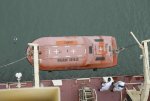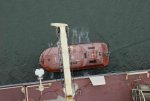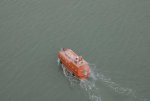alexhibbert
Member
Hi all,
I have a 7.5m displacement TELB hull with a DV48 Bukh diesel. (48hp turbo 3-cyl)
The SOLAS requirement is to achieve a steady 6 knots, and this is what I get at mid revs. Up top there's not much more speed - maybe a knot or two.
It's not a tiny engine, and I'm aware there are complex methods to calculate a max speed for a hull, but is there a method to extract more pace? The propeller is as original, and I'm not sure whether a different design could get the boat up to nearer 10 knots without being up the top of the power curve and wasting fuel.
Thanks.
I have a 7.5m displacement TELB hull with a DV48 Bukh diesel. (48hp turbo 3-cyl)
The SOLAS requirement is to achieve a steady 6 knots, and this is what I get at mid revs. Up top there's not much more speed - maybe a knot or two.
It's not a tiny engine, and I'm aware there are complex methods to calculate a max speed for a hull, but is there a method to extract more pace? The propeller is as original, and I'm not sure whether a different design could get the boat up to nearer 10 knots without being up the top of the power curve and wasting fuel.
Thanks.



